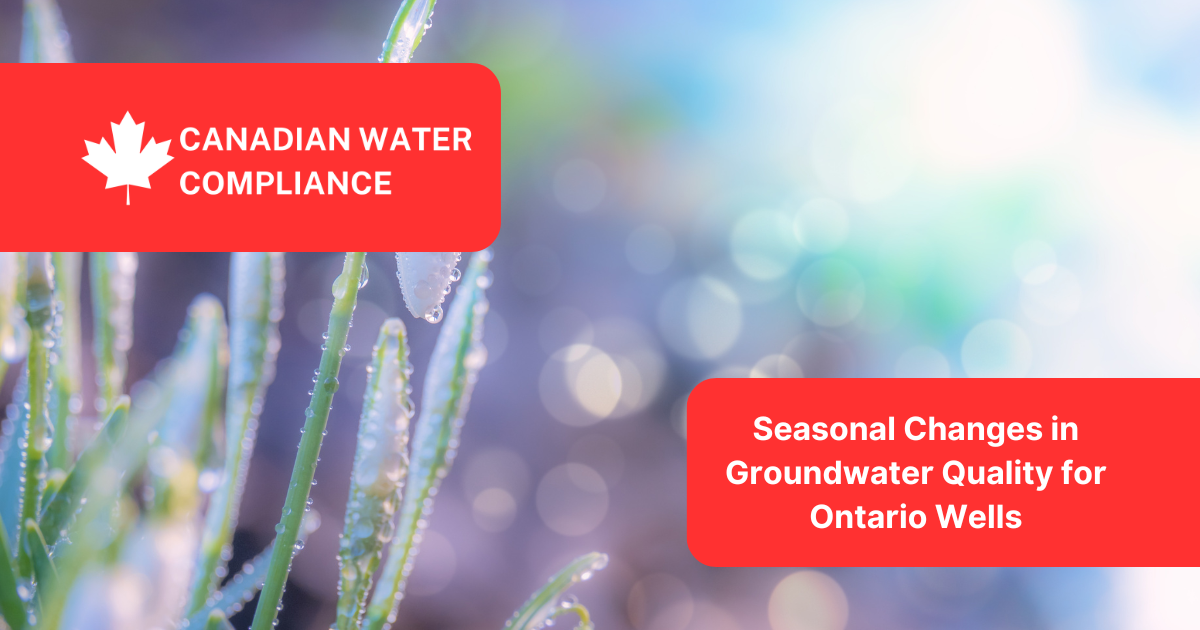
Written By: Canadian Water Compliance | On
Private well owners in Ontario often assume that once their water tests clean, it will stay that way. Unfortunately, groundwater quality is not static—seasonal changes can significantly impact the safety and composition of well water. From spring thaw to late-summer droughts, natural and human-influenced factors can alter water chemistry, introduce new contaminants, or affect microbial levels.
This article explores why regular testing throughout the year is critical for private well owners and how to protect your household or property from the risks of seasonal water changes.
Ontario’s climate and geology contribute to notable shifts in groundwater quality:
Spring Thaw & Runoff: Melting snow and increased rainfall can carry surface contaminants—like manure, road salt, and fertilizers—into aquifers and wells.
Summer Droughts: Drier months can concentrate minerals and contaminants, or reduce the dilution of harmful substances.
Fall Leaf Decay: Organic matter breaking down near wells can introduce bacteria and alter pH levels.
Winter Freezing: While water activity slows, changes to plumbing systems and pressure can still affect water quality or introduce sediment.
These seasonal effects can alter the presence of bacteria like E. coli, raise nitrate or sodium levels, or shift pH and turbidity—all of which may compromise water safety.
Unlike municipal systems, private wells are not monitored by government bodies. It’s up to the property owner to ensure their water remains safe for consumption and use. Failure to account for seasonal changes could lead to:
Acute health risks from microbial contamination
Long-term exposure to heavy metals or nitrates
Liability issues if others use your water supply and become ill
Costly repairs from corroded plumbing or clogged systems due to sediment
Ontario’s Ministry of Health recommends testing for bacteria (total coliforms and E. coli) at least three times per year, ideally during different seasons. However, best practices suggest:
Spring: Comprehensive testing after thaw and rainfall
Mid-Summer: Microbial and chemical testing during dry periods
Fall: Testing for organics and turbidity after leaf fall
Winter: Check water clarity, temperature, and chemical changes if applicable
Additional testing should be done if:
There is a change in taste, smell, or colour
The well is newly drilled or modified
Nearby land use changes (e.g., construction, agriculture)
Flooding or drought occurs
We offer year-round water testing packages tailored for private well owners, including:
Certified sampling during peak risk periods
Comprehensive lab analysis for bacteria, metals, nitrates, sodium, and more
Ongoing monitoring plans with reminders and seasonal assessments
Clear, actionable reports that help you interpret your results
Whether your property is a full-time residence or seasonal cottage, regular testing ensures you stay compliant, safe, and informed throughout the year.